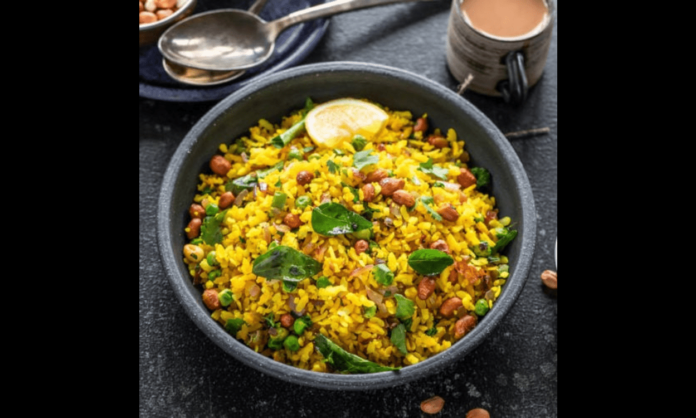Ultimate Guide to Poha in English
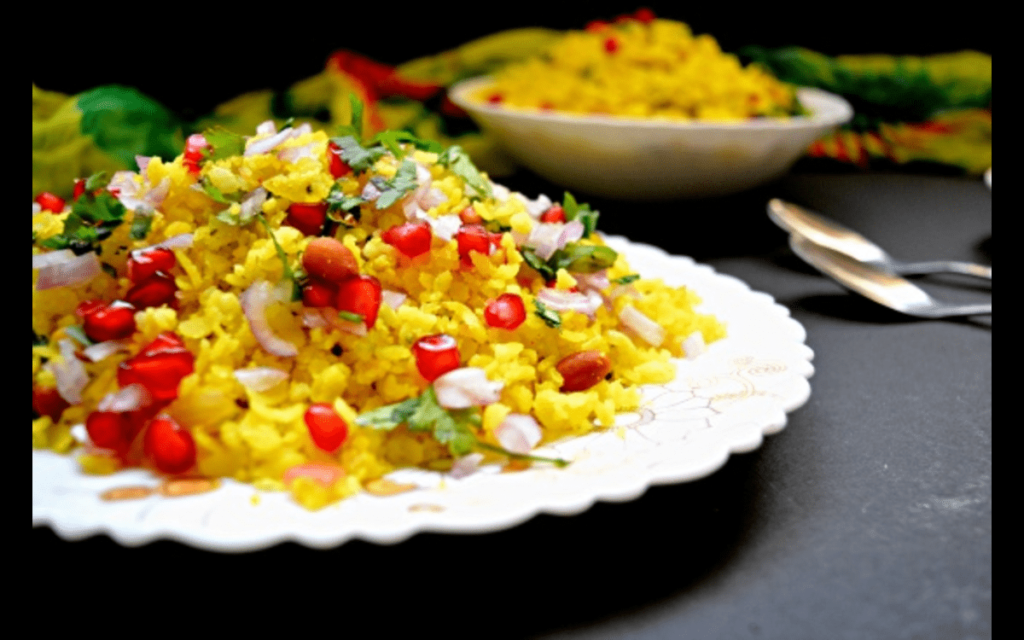
Poha, also known as flattened rice, is a popular Indian breakfast dish that has gained recognition worldwide for its unique flavors and versatility. In this comprehensive guide, we will take you on a journey through the history, recipes, and benefits of Poha in english language. From its humble origins to its place in modern cuisine, we’ll leave no stone unturned as we uncover the secrets behind this beloved dish.
Introduction
Poha, a traditional Indian breakfast staple, has captivated the hearts and palates of people across the globe. Whether you’re a food enthusiast, a curious traveler, or someone looking to embrace a healthier lifestyle, this ultimate guide will provide you with everything you need to know about Poha.
What is Poha in English?
Poha, also referred to as flattened rice, is a rice-based dish made from parboiled rice that has been flattened into thin, light flakes. These flakes are then processed further to remove any remaining moisture, resulting in a dry and easy-to-cook ingredient. Poha is a versatile ingredient that can be prepared in various ways, making it suitable for breakfast, snacks, or even main meals.
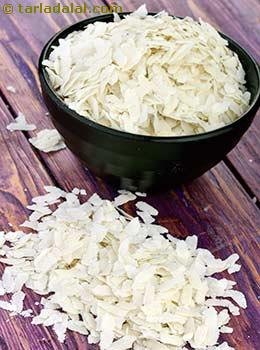
The History of Poha
The origins of Poha can be traced back to the Indian subcontinent, where it has been a part of the culinary culture for centuries. It is believed that Poha was introduced in India during the 12th century by the Mughals, who brought the technique of parboiling rice from Persia. Over time, Poha gained popularity across different regions of India and evolved into different regional variations and recipes. Today, it is enjoyed not only in India but also in various parts of the world, thanks to its delicious taste and easy preparation.
Types of Poha
Poha comes in different varieties, each offering a unique texture and flavor profile. Some of the common types of Poha include:
- Thin Poha: This variety of Poha has thin flakes, making it quick to cook and ideal for recipes that require shorter cooking times.
- Thick Poha: Thick Poha consists of thicker flakes, which retain their shape and texture even after cooking. It is commonly used in recipes that call for a heartier and more substantial texture.
- Red Poha: Red Poha is made from red rice and has a slightly nuttier flavor compared to the regular white Poha. It is also known for its higher nutritional content.
- Brown Poha: Brown Poha is made from brown rice and is considered a healthier alternative to white Poha. It retains more nutrients and offers a slightly earthy taste.
- Multigrain Poha: As the name suggests, multigrain Poha is made from a blend of various grains, such as rice, wheat, millet, and barley. It provides added nutritional benefits and a unique flavor profile.
Benefits of Eating Poha
Poha not only tantalizes your taste buds but also offers several health benefits. Here are some of the advantages of including Poha in your diet:
- Rich in Carbohydrates: Poha serves as an excellent source of carbohydrates, providing a quick and sustained release of energy, making it an ideal choice for breakfast or pre-workout meals.
- Low in Calories: Poha is relatively low in calories, making it a great option for those looking to manage their weight. It keeps you full for longer periods, reducing the chances of overeating.
- High in Iron: Poha contains a good amount of iron, which is essential for maintaining healthy blood cells and preventing iron deficiency anemia.
- Rich in Vitamins and Minerals: Poha is packed with essential vitamins and minerals, including vitamin B, vitamin E, magnesium, potassium, and phosphorus, which contribute to overall well-being.
- Easy to Digest: The process of parboiling and flattening rice enhances its digestibility, making Poha gentle on the stomach and suitable for people with digestive issues.
- Gluten-Free Option: Poha is naturally gluten-free, making it a safe and nutritious choice for individuals with gluten sensitivities or celiac disease.
Nutritional Value of Poha
Poha is a nutrient-dense food that offers a range of essential nutrients. Here is the approximate nutritional composition of 100 grams of Poha:
- Calories: 110 kcal
- Carbohydrates: 24 grams
- Protein: 2 grams
- Fat: 0.1 grams
- Fiber: 1.5 grams
- Iron: 8% of the daily recommended intake
- Vitamin B6: 10% of the daily recommended intake
- Magnesium: 8% of the daily recommended intake
Please note that these values may vary slightly depending on the specific type and brand of Poha.
How to Make Traditional Poha
Ingredients:
- 2 cups of Poha
- 1 tablespoon of oil
- 1 teaspoon of mustard seeds
- 1 teaspoon of cumin seeds
- 1 onion, finely chopped
- 1 green chili, finely chopped
- Curry leaves (a sprig)
- 1/4 teaspoon of turmeric powder
- Salt to taste
- Fresh coriander leaves for garnish
- Lemon wedges
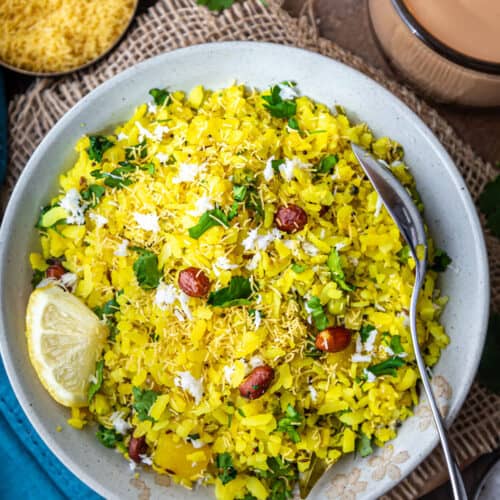
Instruction:
- Begin by rinsing the Poha in a colander under gentle running water for a few seconds. Leave it aside for a minute to allow it to soften.
- Heat the oil in a pan over medium heat. Add the mustard seeds and cumin seeds to the pan. Let them crackle and release their aroma.
- Add the finely chopped onion, green chili, and curry leaves to the pan. Sauté until the onions turn translucent.
- Add the turmeric powder and salt. Mix well.
- Gently fluff the rinsed Poha with a fork and add it to the pan. Mix everything together until the Poha is evenly coated with the spices.
- Cook for 2-3 minutes, stirring occasionally, until the Poha is heated through.
- Take the pan off the heat and sprinkle the dish with a generous garnish of freshly chopped coriander leaves.
- Serve hot with a squeeze of lemon juice on top for an extra tangy flavor.
Shop Here: Poha, Oil, Mustard Seeds, Cumin Seeds, Onion, Green Chilli, Curry Leaves, Turmeric Powder, Salt, Coriander Leaves.
Popular Variations of Poha Recipes
Poha is a versatile dish that can be customized to suit individual preferences. Here are some popular variations of Poha recipes that you can try:
Kanda Poha (Onion Poha):
In this variation, finely chopped onions are sautéed with spices before adding the Poha. The presence of onions imparts a delightful combination of sweetness and savoriness to the dish, elevating its flavor profile.
Batata Poha (Potato Poha):
This version includes the addition of boiled and diced potatoes to the Poha. The potatoes provide a hearty and filling element to the dish.
Indori Poha:
Indori Poha is a specialty from the city of Indore in India. It is characterized by the use of thick Poha, topped with sev (crispy gram flour noodles), chopped onions, coriander leaves, and a variety of chutneys.
Aloo Poha (Potato Poha):
Aloo Poha features the combination of Poha and boiled potatoes, along with a medley of spices. It is a popular breakfast option in many households.
Peanut Poha:
Peanut Poha incorporates roasted peanuts into the dish, adding a crunchy texture and nutty flavor. The dish offers an impeccable harmony of diverse flavors and textures, creating a truly delightful culinary experience.
These are just a few examples of the numerous ways Poha can be prepared. Feel free to experiment with different ingredients and spices to create your own unique variations.
Quick and Easy Poha Recipes
Looking for quick and easy Poha recipes? Here are a couple of recipes that you can prepare in no time:
Poha Upma:
Ingredients:
- 2 cups of Poha
- 1 tablespoon of oil
- 1 teaspoon of mustard seeds
- 1 teaspoon of cumin seeds
- 1 onion, finely chopped
- 1 green chili, finely chopped
- Curry leaves (a sprig)
- 1/4 teaspoon of turmeric powder
- Salt to taste
- Fresh coriander leaves for garnish
- Lemon wedges
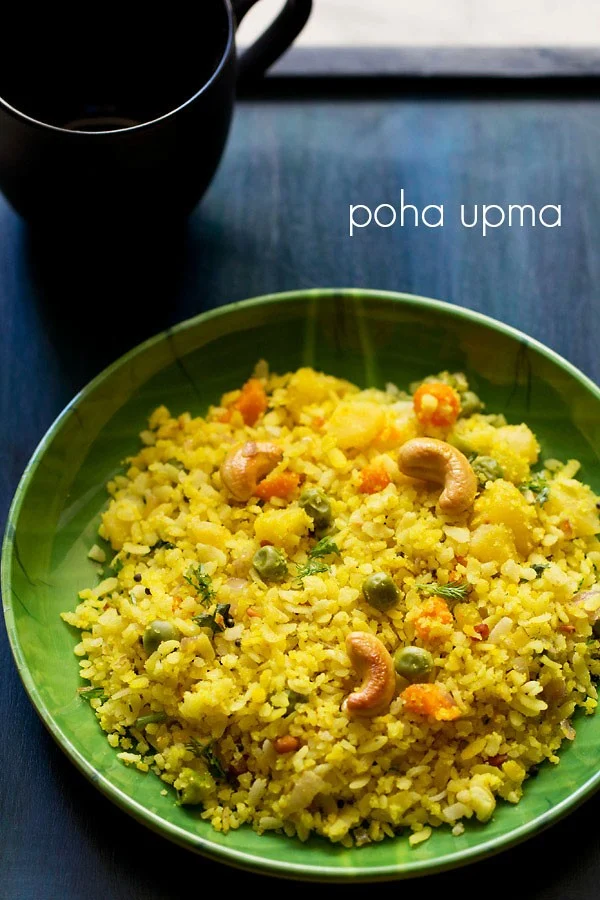
Instruction:
- Rinse the Poha under running water and set aside.
- In a pan, warm up some oil and introduce the aromatic dance of mustard seeds and cumin seeds as they sizzle and infuse their flavors. Allow them to crackle.
- Add chopped onions, green chili, and curry leaves. Sauté until the onions turn translucent.
- Add turmeric powder and salt. Mix well.
- Add the rinsed Poha and gently toss until well combined.
- Cook for 2-3 minutes, stirring occasionally, until the Poha is heated through.
- Garnish with fresh coriander leaves and serve hot with lemon wedges.
Shop Here: Poha, Oil, Mustard Seeds, Cumin Seeds, Onion, Green Chilli, Curry Leaves, Turmeric Powder, Salt, Coriander Leaves.
Sweet Poha:
Ingredients:
- 2 cups of Poha
- 2 tablespoons of ghee
- 1/2 cup of jaggery (or sugar)
- 1/4 cup of grated coconut
- Include a generous 1/4 cup of finely chopped nuts, such as delectable almonds, creamy cashews, or vibrant pistachios, to enhance the delightful crunchiness of the dish.
- 1/2 teaspoon of cardamom powder
- Pinch of salt
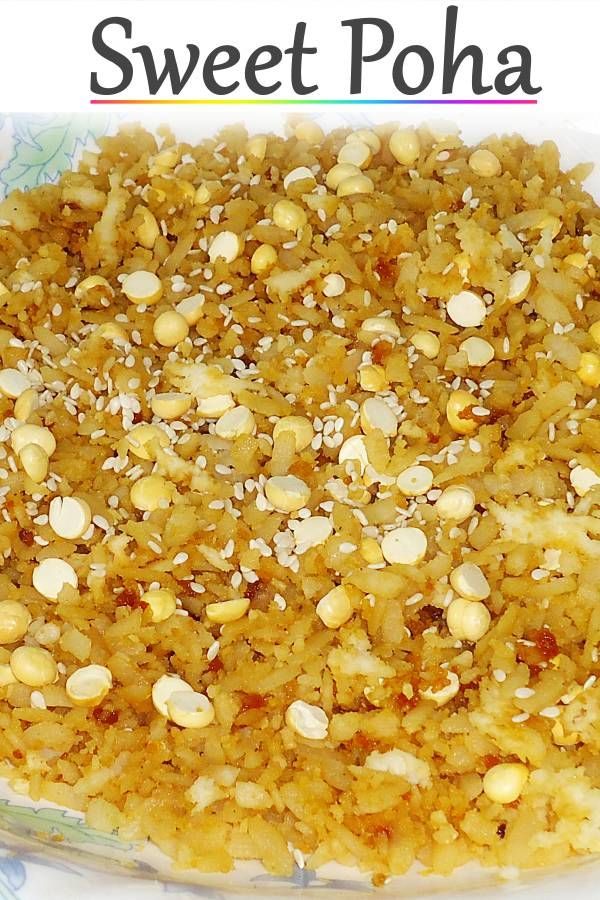
Instruction:
- Rinse the Poha under running water and set aside.
- Heat ghee in a pan over medium heat.
- Add the chopped nuts and sauté until they turn golden brown.
- Add the grated coconut and sauté for a minute until it becomes fragrant.
- Add jaggery (or sugar), cardamom powder, and a pinch of salt. Mix well until the jaggery melts and forms a syrup.
- Add the rinsed Poha to the pan and gently mix until it is well coated with the sweet syrup.
- Cook for 2-3 minutes, stirring occasionally, until the Poha is heated through and the flavors are well incorporated.
- Remove from heat and let it cool slightly before serving.
Shop Here: Poha, Ghee, Jaggery, sugar, Grated Coconut, Almond, Cashew, Pistachio, Cardamom Powder, Salt.
These quick and easy recipes are perfect for those times when you want to enjoy a delicious and nutritious meal without spending too much time in the kitchen.
Frequently Asked Questions about Poha:
Is Poha a healthy breakfast option?
Yes, Poha is a healthy breakfast option. It is low in calories, rich in carbohydrates, and provides essential nutrients. However, it’s important to be mindful of portion sizes and the ingredients used in the preparation.
Can I eat Poha if I have gluten intolerance?
Yes, Poha is naturally gluten-free and can be enjoyed by individuals with gluten intolerance or celiac disease.
Can I add vegetables to Poha?
Yes, you can add vegetables like peas, carrots, bell peppers, or tomatoes to enhance the nutritional value and taste of Poha.
Can I store Poha for later use?
Yes, you can store Poha in an airtight container in a cool, dry place for a few weeks. Ensure that it is completely cooled before storing to prevent moisture buildup.
Is Poha suitable for weight loss diets?
Poha can be a part of a balanced weight loss diet due to its low calorie and high fiber content. Nevertheless, maintaining a sense of balance in your servings and making conscious decisions regarding the ingredients you use are key aspects when it comes to effectively managing your weight.
Can I substitute white Poha with brown or red Poha?
Yes, you can substitute white Poha with brown or red Poha. Brown Poha and red Poha offer additional nutritional benefits and a slightly different taste.
Is Poha suitable for diabetics?
Poha can be consumed in moderation by diabetics as part of a well-balanced meal plan. Seeking guidance from a healthcare practitioner or a certified nutritionist is recommended for tailored dietary advice that suits your individual needs.
Can I make Poha without oil?
Yes, you can make Poha without oil. Instead of sautéing the ingredients, you can steam or microwave the Poha and then mix it with the desired seasonings and toppings.
Is Poha suitable for kids?
Poha is a kid-friendly dish that can be customized to suit their taste preferences. Ensure that the ingredients are age-appropriate and introduce new flavors gradually.
Conclusion:
In conclusion, Poha is a versatile and delicious dish that has become a staple breakfast option in many households. Its rich history, easy preparation, and wide range of flavors make it a popular choice among people of all ages. Whether you prefer the traditional recipe or like to experiment with variations, Poha offers a satisfying and nutritious meal option.
With its low-calorie content, high carbohydrate content, and essential nutrients, Poha provides a balanced start to your day. It is a great source of energy, aids digestion, and contributes to overall well-being. Additionally, its gluten-free nature and ability to be customized to individual preferences make it a versatile dish for various dietary needs.
So, the next time you’re looking for a quick, easy, and nutritious breakfast or snack option, consider indulging in a plate of Poha. Whether you enjoy it with a cup of tea, a side of chutney, or simply on its own, Poha is sure to satisfy your taste buds and keep you energized throughout the day.
Remember to get creative with your Poha recipes, try different toppings, and experiment with flavors to find your perfect combination. Enjoy the journey of discovering the endless possibilities that Poha has to offer!

